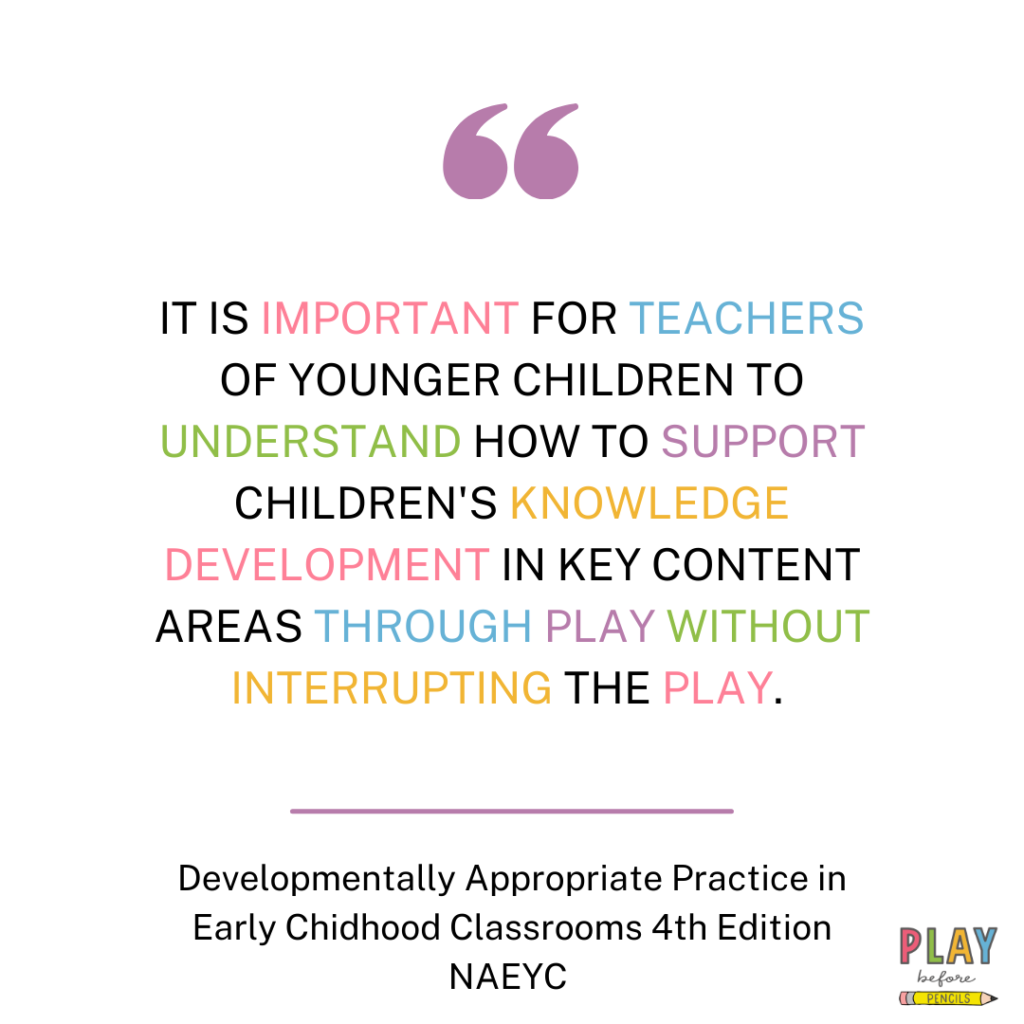This week I’m going to dive into the topic of observation in teacher-led classrooms.
In teacher-led classrooms, children commonly move from one activity to another on a predictable schedule. Time periods are designated for specific activities that the class as a whole participates in, with some small group and independent time sprinkled in. A typical schedule in a teacher-led preschool might be broken into segments that include circle time/calendar, centers (sometimes free choice, sometimes timed rotations), arts & crafts, seatwork (handwriting practice, scissor skills, direct instruction, etc), story time, free play. The defining characteristic is that the schedule more or less flows based on the time on the clock. The teacher is in charge of starting and stopping each activity, and often will be giving instructions throughout the activity to help children complete it in a timely manner.
As a teacher who is currently working in a teacher-led, schedule-bound program, I can assure you that when you have a checklist of items to complete in a designated period of time, there is little time to do anything other than manage children through those activities. The observations I’m able to make during the day largely pertain to how quickly things are being completed, and rarely help me assess which skills my students are doing well with and what they could use extra support in.
Since we know that observation is a key part of assessment, teachers who are having to spend all of their time managing activities are at a great disadvantage to those who have a less rigid program model. They not only don’t have the time to make observations, they don’t have the time to record observations.
In my center, product art is a staple. Children do little more than glue pre-cut shapes onto construction paper, following a specific sample posted on the board. My job is to make sure that each child places each piece of the finished product on the page in the right place and in the right order. At a time when teachers in play-based models are able to observe a myriad of skills while children engage in process art, I am able to observe two primary skills–how well the child can manipulate a glue stick and how well they can imitate a sample. A project intended by the director to make teaching easier for the teacher (straightforward finished products, pre-cut shapes, little mess) is actually making my job harder (what skills do my students need support in?) and providing very little enrichment for the kids.
According to NAEYC, “It is important for educators to systematically observe and assess each child’s abilities and interests, which are always changing, so they can effectively support children’s learning” (Developmentally Appropriate Practice in Early Childhood Classrooms, 4th Edition).

Play-based learning models allow teachers the flexibility they need to become systematic observers and assessors. The more play, the better, but even those of us who have little control over our daily schedules and can only provide short periods of time can utilize that time to do more observing.
Teachers who are used to a more teacher-led model maybe feel a little uncomfortable with stepping back and becoming a keen observer at first–the temptation to jump in to correct and help is strong at times! But observing kids at play provides a gold mine of information! As you practice stepping into the role of observer, you will begin to see information unfold before your eyes, and you will be amazed at the skills your students demonstrate during play.